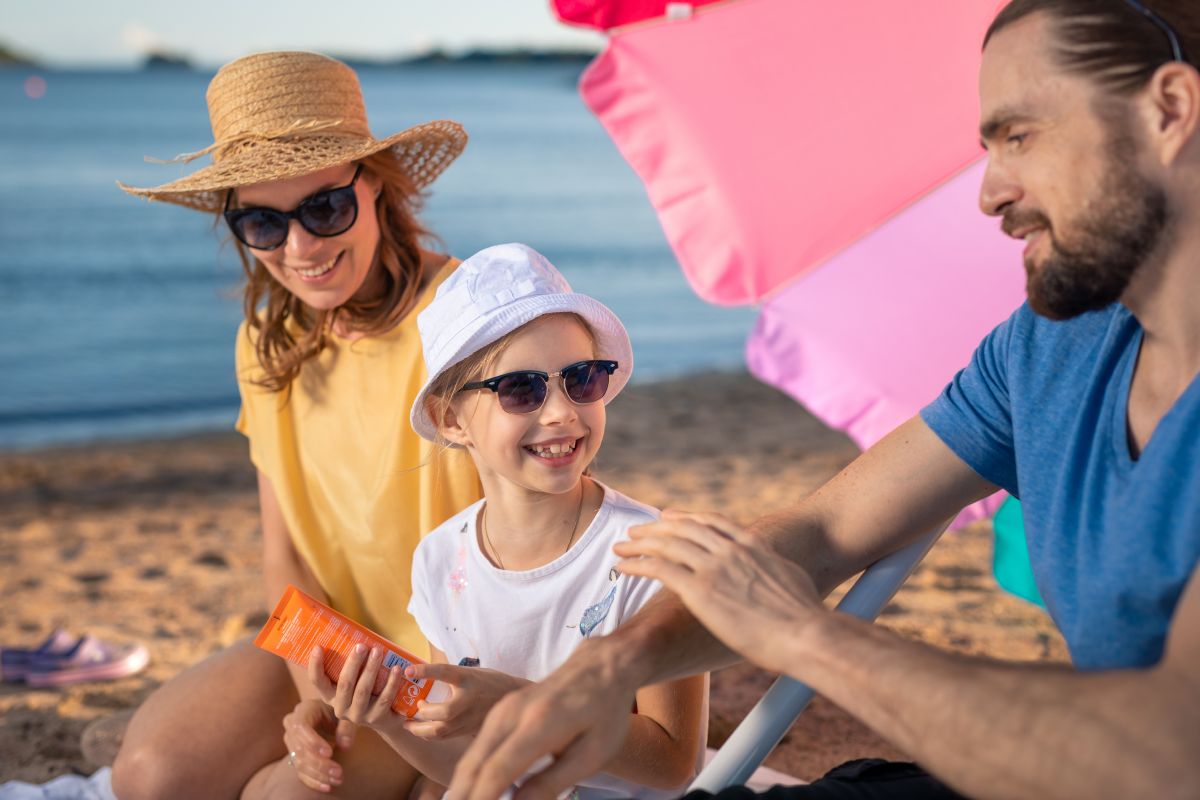Protect yourself properly from the sun
Avoid burning and get gently used to the sun. Repeated burning increases the risk of malignant melanoma. Therefore, burning should be avoided. Particularly important is protection from the sun's ultraviolet (UV) radiation for children and for those who are light-skinned, red-haired and freckled (skin types I and II).
Have a siesta
About half of the amount of UV accumulated during the day comes between 11am and 3pm. Avoiding sun in the noon hours effectively reduces the amount of radiation received.
Seek the shade
In the shade, there is half as much UV radiation as in the sun. The shade is even more efficient when most of the sky is covered behind trees or buildings. Because of the scattering of radiation, up to half of the UV radiation comes directly from the sun and the rest evenly across the sky. Therefore, the sun burns the skin particularly effectively when on the beach or on the water.
Stay upright
The main reason for sunburns when sunbathing is the lying position. A person lying down receives four times the amount of UV radiation compared to person standing upright. Staying on the move helps also as the exposure is distributed more evenly across the skin.
Shirt on
Clothing offers the best UV protection. Most summer clothes offer good protection against UV radiation. The properties of the fabric are important when considering UV protection. If the garment is made of a darker or tightly woven fabric, it provides better UV protection for the skin compared to the light or thin fabric, as UV cannot penetrate through the fabric so easily. Transparent or lacey fabric offers little or no protection from UV radiation, as UV radiation can easily pass through the fabric. However, when choosing a garment, you should choose a colour and pattern that is easy and comfortable to wear, even in warm weather, such as loose, covering, and light-coloured garments. A good hat protects the face, neck, and ears.

Add protection with sunscreen
Sunscreens contain protective agents that reduce the amount of UV radiation, especially UVB radiation, that gets into the skin.
The sun protection factor (SPF) indicates the product's effectiveness. As the SPF value increases, sunburn protection increases. Particularly for sensitive skin, you should choose a high protection factor sunscreen. However, even a high protection factor does not provide complete protection against UV radiation. Despite the sunscreen, the longer the skin is exposed to the sun, the more it receives radiation. Sunscreens should be used to reduce the amount of radiation exposure to the skin and not to prolong sun exposure.
It is not recommended to use sunscreens at the skin of children under the age of two, but instead, you should protect their skin with clothing or shade. Older children should use sunscreens suitable for children.
The protection provided by the sunscreen depends not only on the protection factor but also on the amount of cream applied to the skin. Generally, people apply sunscreen far less - and less often - than recommended by the manufacturers. If the applied sunscreen layer is thinner than it should, the resulting protective factor is significantly lower than stated on the product packaging.
It is a good idea to apply the sunscreen well in advance before going out to the sun and remember to reapply it as you stay in the sun for a longer time. Remember to add sunscreen after swimming and towel drying or if you sweat so hard that the sunscreen drains away from your skin.
Wear sunglasses
Protect your eyes with sunglasses. Protecting the eyes of children is especially important because the lens of the child's eye lets in more UV radiation than in the adult’s eye and the radiation can penetrate to the retina, damaging it. Good sunglasses are large and provide protection against UV radiation entering from the sides as well. The UV 100% or UV 400 mark on the sunglasses indicates that the glasses completely filter out the UV radiation.
Check the UV index
The UV index indicates the amount of harmful UV radiation from the sun by one number. The higher the UV index, the shorter time the skin tolerates exposure to the sun without burning. In Finland, the UV index has the highest value of 7, which is reached on the south coast in mid-summer at noon.
During the summer, the intensity of UV radiation in Finland is presented in weather reports. A warning of high UV radiation is given if the UV index is 6 or more. The website of the Finnish Meteorological Institute provides UV index forecasts for the whole world.
Shade can reduce the sun's UV radiation by up to half compared to direct sunlight. Children should therefore have access to outdoor areas with both sunny and shady spots. This would provide an environment with protection from the sun, daylight and a comfortable temperature.
STUK, together with other Nordic radiation safety authorities, has published a position paper to help ensure that children have enough shade in outdoor play areas in 2017. In the position paper, the Nordic authorities call on municipalities, urban planners and leisure and sports clubs to take into account the need for shade when designing and building outdoor spaces for children. Read the position paper: Nordic position paper: children's outdoor play areas must have shade from the sun.
[email protected]